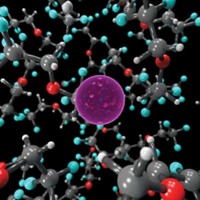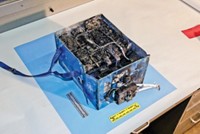Advertisement
Grab your lab coat. Let's get started
Welcome!
Welcome!
Create an account below to get 6 C&EN articles per month, receive newsletters and more - all free.
It seems this is your first time logging in online. Please enter the following information to continue.
As an ACS member you automatically get access to this site. All we need is few more details to create your reading experience.
Not you? Sign in with a different account.
Not you? Sign in with a different account.
ERROR 1
ERROR 1
ERROR 2
ERROR 2
ERROR 2
ERROR 2
ERROR 2
Password and Confirm password must match.
If you have an ACS member number, please enter it here so we can link this account to your membership. (optional)
ERROR 2
ACS values your privacy. By submitting your information, you are gaining access to C&EN and subscribing to our weekly newsletter. We use the information you provide to make your reading experience better, and we will never sell your data to third party members.
Energy
Simple Method Stabilizes Li-Ion Conductor
Development may lead to new solid electrolytes and inherently safe Li-ion batteries
by Mitch Jacoby
May 26, 2014
| A version of this story appeared in
Volume 92, Issue 21
Lithium-ion batteries are the rechargeable workhorses that power the great majority of today’s electricity-hungry portable gadgets and tools. These batteries boast extreme reliability and an outstanding performance record. Nonetheless, the cells’ flammable liquid organic electrolyte solution poses a minute but potentially serious safety hazard. Researchers have tried for years to develop a solid-state nonflammable replacement for the liquid electrolyte, but most of the solids are weak Li-ion conductors. Tohoku University materials scientist Hitoshi Takamura and coworkers showed several years ago that at high temperature, a structural transition causes the conductivity of LiBH4 to jump by three orders of magnitude compared with the room-temperature value. A related phase transition causes LiBH4 to conduct strongly at high pressure. But it is difficult to keep these phases stable under ambient conditions. Now, on the basis of X-ray, microscopy, and conductivity analyses, the Tohoku team has shown that intimately mixing LiBH4 and potassium iodide and sintering the solid solution in vacuum at about 200 °C forms a highly conducting phase that remains stable at ambient conditions (APL Mater. 2014, DOI: 10.1063/1.4876638 ).





Join the conversation
Contact the reporter
Submit a Letter to the Editor for publication
Engage with us on Twitter